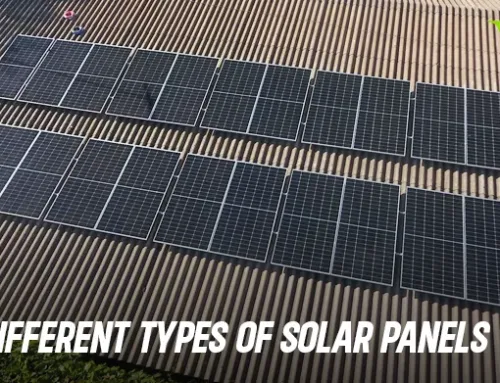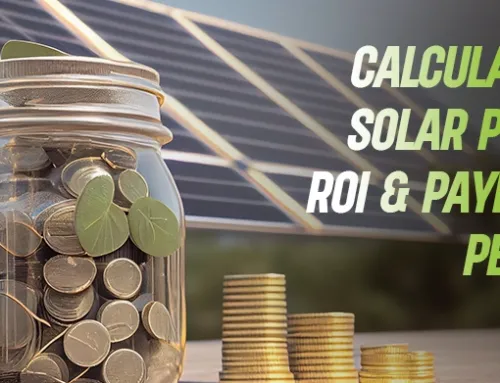Solar panels are a vital source for generating renewable energy through sunlight. As India is rapidly transitioning towards sustainability, solar energy has been contributing around 47% to the country’s renewable energy production.
Solar panel installations have doubled from 12.8 GW in 2023 to 24.5 GW in 2024. This reflects the acceleration of solar power in India.
Solar panel cleaning can increase the power generation by 15% – 30% annually. However, solar panel cleaning using the best methods is important to achieve higher efficiency of the solar plants.
Eliminating dust and debris from the solar panels enhances their productivity. At the commercial sites, the efficiency of the solar panels can increase by 50% – 60%.
This article gives a detailed purview regarding solar panel cleaning and the best methods used for cleaning solar panels.
What Is Solar Panel Cleaning?
Solar Panel Cleaning is a technique of removing the accumulated dust and grime from the surface of the solar panels. The soiling on the solar panels has been said to reduce the efficiency by 3% – 4% daily. This further resulted in millions of losses.
This hampers the absorption of sunlight, reducing the overall power generation of the solar plants. It may also affect the longevity of the solar panels.
So, timely cleaning and maintenance of solar panels are necessary to enhance the power generation through them and maximise their lifespan.
Depending on the location and environmental factors of the solar plant site, it is pivotal to schedule regular cleaning of the solar panels.
Why Is It Necessary To Clean Solar Panels?
Regular solar panel cleaning is required for uninterrupted power generation and to prevent any losses. Clean solar panels ensure seamless light absorption and optimal energy production.
The buildup of environmental debris and dust reduces the energy absorption by 25%, decreasing their efficiency. The persistent accumulation of dirt over the surface of the panels can also damage them if not duly maintained.
The sunlight absorption decreases gradually depending on the amount of dirt stuck up on the panels. These lead to spotting and abrasion, further causing minor major cracks.
The damage will not only diminish energy production but also cost huge repairs or replacement of solar panels.
Moreover, investment in solar panel cleaning is cost-effective. It also prevents financial and inconsistent power generation. Though the installation of solar plants might be costlier, properly maintained solar panels generate attractive returns on investment.
The environmental factors also impact the functioning of the solar panels. Solar plants in dusty areas or arid zones are more prone to excessive dust. In such cases, daily and professional cleaning is needed to rinse off the stubborn dirt.
Methods Of Solar Panel Cleaning
There are various methods of solar panel cleaning ranging from conventional techniques to advanced automated robotic cleaning systems. The solar panel cleaning method can be either water-based or waterless, depending on factors like cost, size of the solar plant, residential or commercial, location, etc.
Solar panels are primarily classified into two types as mentioned below.
Manual Solar Panel Cleaning Methods
Manual Solar Panel Cleaning is a traditional and commonly used method of solar panel cleaning. The various methods of manual solar cleaning are as mentioned:
Dry Cleaning With Brush – Cleaning with a brush is the preferred method in dry areas with less water. Soft-bristled brush or a microfibre cloth is used for cleaning off the dust from the panels. It is effective for less debris and saves water but ineffective for sticky dust.
However, there are certain challenges in this method such as:
- Abrasion by sponges or brushes.
- Labour-intensive and time-consuming method.
- Required persistent monitoring.
- Not suitable for stubborn dirt and large-scale installations.
Water-based Cleaning – In this method, mild detergent, water, soft brushes and non-abrasive sponges are used for cleaning the panels. Effective for small installations, it utilises a significant amount of water and manual effort.
Challenges in the water-based manual solar panel cleaning method:
- High-pressure water may result in tears, scratches, and cracks on the panels.
- Water ingression can cause hazard or permanent damage to the panels.
- Wastage of a huge amount of water on a regular basis.
- Untreated water may leave back mineral residues on the solar panel surface.
- Completely risky method without due training and expertise.
Automated Solar Panel Cleaning Robots

Solar cleaning robots are automated and semi-automated cleaners mounted on the surface of panels. It integrates rotating brushes, air flow, and a microfibre cloth to clean the dust.
Taypro’s automated solar cleaning robots use a dual-pass cleaning system. This waterless technique utilises microfibre cloth and air pressure to remove dirt and debris. This method prevents abrasion and staining.
This automatic solar panel cleaning system is useful for large-scale solar installations where consistent cleaning is required.
Here is a comparison between traditional solar panel cleaning vs TAYPRO’s solar cleaning robots. This data is based on the Actual On-Site SCADA report from solar plant in Rawra, Rajasthan.

Advantages of Solar Panel Cleaning Robots
- Automated solar panel cleaning robots increase the overall efficiency by 3% – 4%.
- It saves a significant quantity of water using water-less tools for cleaning.
- It doesn’t require regular monitoring while cleaning.
- It does not leave any stains or residues after cleaning.
- Automated robots reduce overall operational costs.
- Automated robots guarantee seamless cleaning, ensuring efficiency and longevity.
How Automated Solar Panel Cleaning Robots Work
You may also want to read: Explore different methods for solar panel cleaning
Nanoparticle Coatings
Nanoparticle Coatings is an emerging and advanced technique of solar panel cleaning. A transparent and liquid coating containing silica is placed over the surface of the solar panels. This helps in repelling dust and debris from the solar panels.
This thin coating of silica repels dust and moisture from the solar panels. This prevents any pertaining damage or abrasion to the panels while cleaning.
Its self-cleaning aspect lets the dust slip off easily from the solar panels. It doesn’t require a significant amount of water and labour for cleaning solar panels.
Pipe and Nozzle Module Cleaning System
Pipe and nozzle solar module cleaning system is a water-based solar panel cleaning method. PVC pipes and nozzles are strategically mounted along the solar panels.
The advanced pumping system sprays the water uniformly over the solar panels. The water sprinkled with high-pressure rinses off the dirt from the solar panels.
In this method, the solar panels are efficiently cleaned without leaving any residue. The tilted angle of solar panels further enables quick water drainage. This technique do not involve any labour work or monitoring.
You may also want to read: Explore different methods for solar panel cleaning
What Should Be The Frequency Of Solar Panel Cleaning?
Occasional cleaning and maintenance of solar panels are necessary to optimise energy production. However, the frequency of solar panel cleaning depends on the surroundings, climate, and locations.
Daily once cleaning by an automated solar panel cleaning robot ensures seamless absorption of sunlight. It prevents any loss in energy production.
The solar plant sites in a cleaner environment do not require regular cleaning. However, the solar panels in the dry regions must be regularly cleaned. It is critical to schedule the cleaning cycle of solar panels in such locations.
Below are the factors that determine the cleaning frequency of solar panels:
Climate – The weather conditions impact the efficiency of solar panels. An area with sufficient rainfall might keep the panels cleaner and require less cleaning. On the contrary, solar panels in a scanty rainfall region need frequent or daily cleaning.
Plant Location – If the location of solar panels is near roadways or construction sites, it will accumulate persistent dust regularly. So, it has to be cleaned on a regular basis with proper techniques.
Angle – The orientation and position of the solar panels determines how frequently they need to be cleaned. Dust and environmental debris fall off from higher slopes on the panels, leading to less cleaning.
Shading – If the solar panels are being shaded by trees, branches, structures, or any other objects, then they have to be cleaned regularly.
Advantages Of Solar Panel Cleaning
- Proper and regular cleaning of solar panels ensures maximum power generation. It boosts the productivity of the solar plant.
- Maintaining regular cleanliness will increase the lifespan of the solar panels, reducing the risk of long-term damage.
- Timely cleaning of solar panels allows the identification of any potential damage at the early stage, resulting in quick repairs.
- High power generation gives a higher return on investment.
You may also want to read: Importance of regular solar panel cleaning for efficiency
Safety Precautions To Take While Solar Panel Cleaning
- As solar panels are mostly installed on roofs, it is vital to take precautionary measures to avoid any injuries or falls.
- Ensure the roof is strong enough and use a sturdy ladder and safety shoes.
- It is important to shut off the system of solar panels before cleaning. It prevents any uncertainty of electrocution.
- A periodic inspection of solar panels is necessary to check for any damage or abrasion.
- Any kind of damage has to be repaired before cleaning the solar panels.
- Limited dust and debris should be cleaned using a light brush with soft bristles.
- Use water for stubborn dirt but with proper pressure. High-pressure hose can damage the panels.
- High-concentrated soaps and abrasive or harsh materials must be firmly avoided.
- Use proper and efficient tools for solar cleaning service.
- In the case of large solar installations, professional cleaning is mandatory with advanced methods such as automated robotics.
- Choosing the right time of the day for cleaning enhances efficiency. Cooler hours of the day are recommended for cleaning to avoid any stains or thermal pressure.
- Regular inspection by an expert will help to address any pertaining issue or maintenance.
FAQs
Solar panel cleaning is the process of removing the accumulated dust and debris from the solar panels. Solar panel cleaning is conducted in manual, semi-automated and automated mode. |
Periodical solar panel cleaning is required to remove the dust, ensuring seamless sunlight absorption and power generation. The dusty panels hamper the absorption of sunlight, thereby, reducing power generation. |
Manual solar panel cleaning is suitable for small-scale solar installations and residential settings. It requires great physical effort and manual monitoring. |
Accumulated dust on the solar panels will hamper sunlight absorption and reduce the efficiency by 3% – 30%, depending on the location and size of the solar plant. |
Harsh detergents, abrasive sponges, untreated water, and hard brushes should not be used for solar panel cleaning. |





